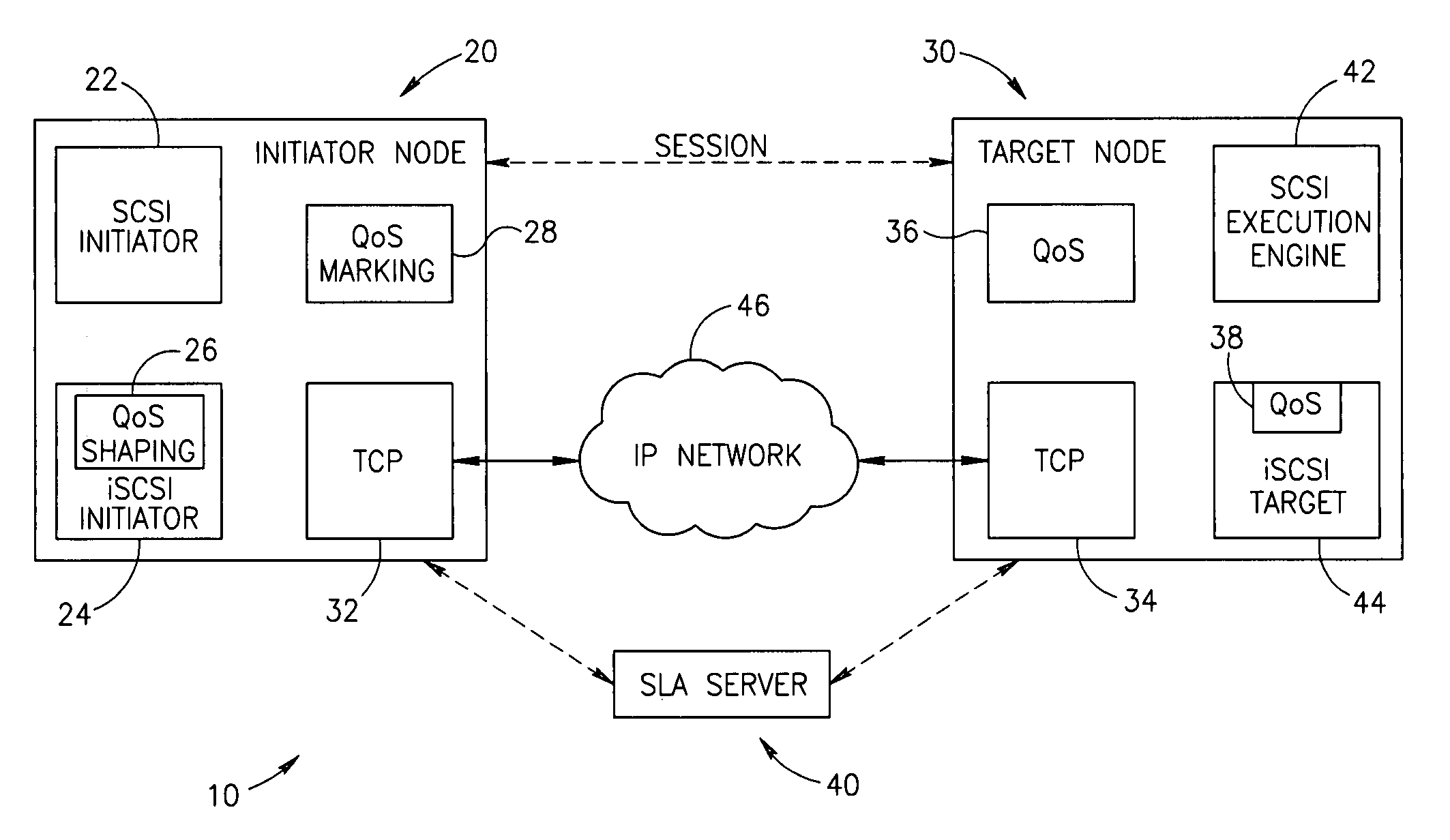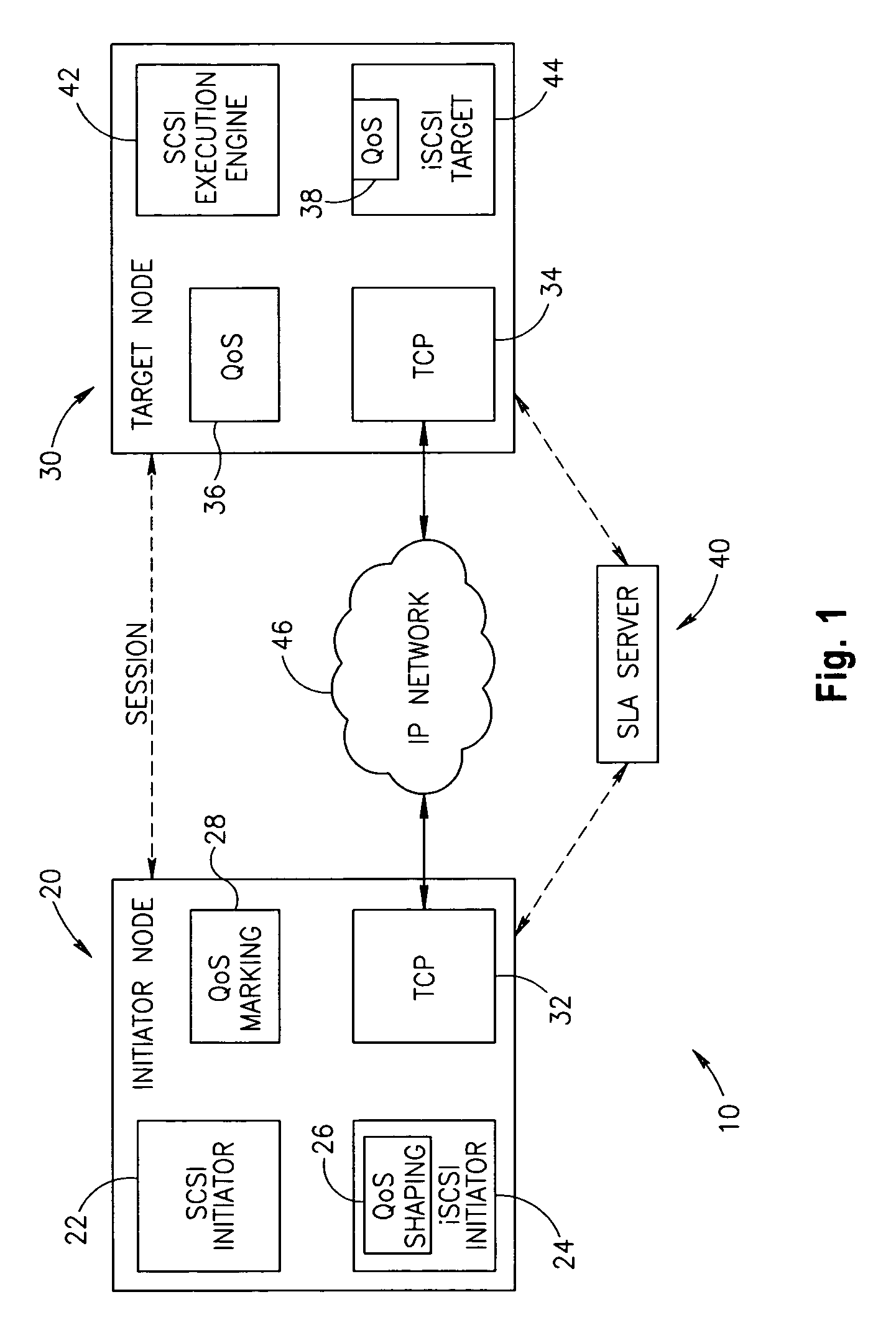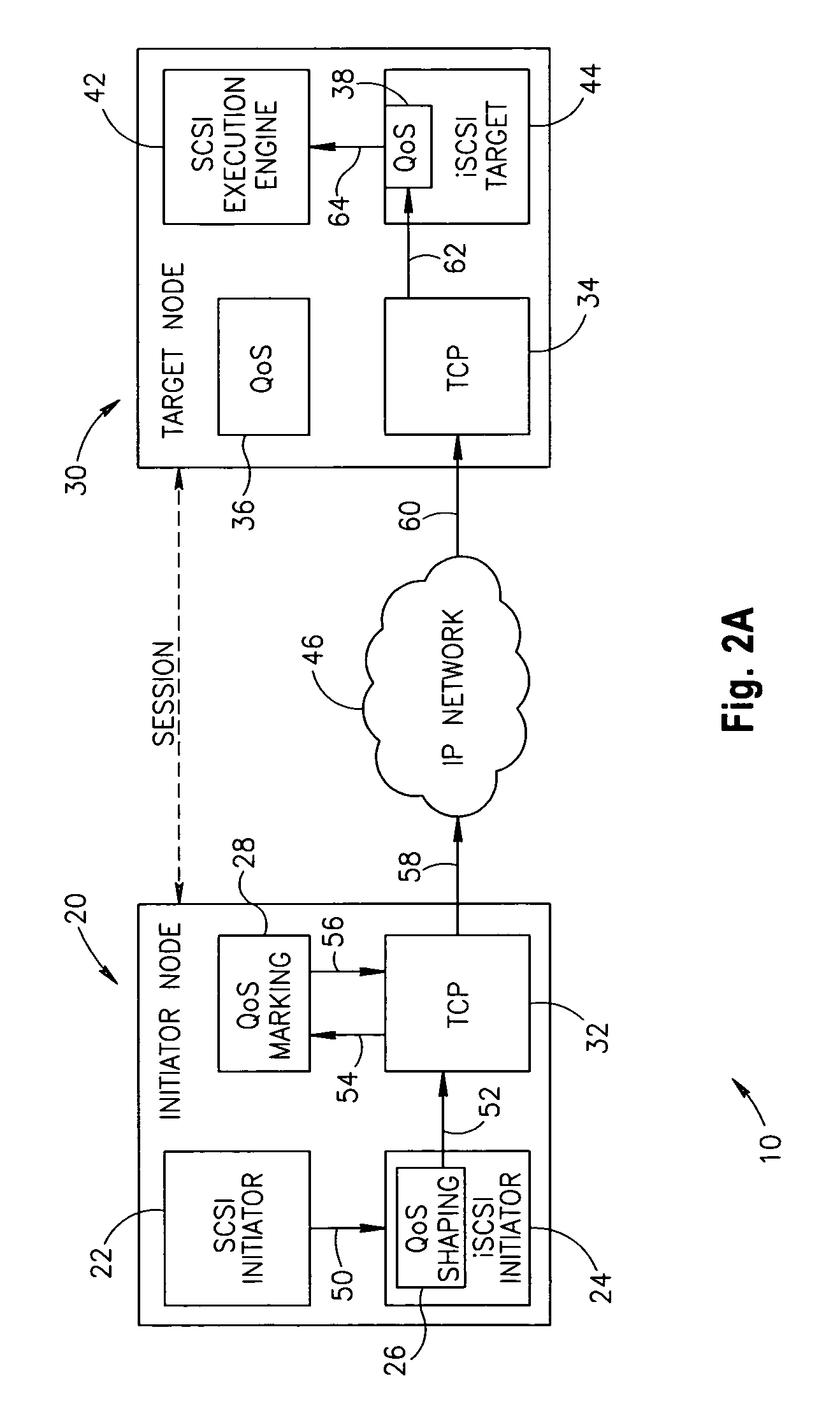Quality of service for iSCSI
a network storage system and quality technology, applied in the field of quality of service, can solve the problems of network storage system special problems, read write activity may create heavy traffic from the client, etc., and achieve the effect of sufficient quality of servi
- Summary
- Abstract
- Description
- Claims
- Application Information
AI Technical Summary
Benefits of technology
Problems solved by technology
Method used
Image
Examples
Embodiment Construction
Glossary
Class of Service (CoS)
[0044]Method of managing traffic, such as in a network, by grouping similar types of traffic in a class that has a given level of service priority. Classes are determined by a set of attributes relevant to the traffic domain (see Filter Specification). The term is also used to refer to a specific class of service.
Command Descriptor Block (CDB)
[0045]Data structure that contains a SCSI command and its attributes. The CDB is sent in a command PDU from an iSCSI initiator to an iSCSI target. The CDB is defined in the SCSI architecture.
Command PDU
[0046]PDU in the iSCSI protocol that contains details of an SCSI command, specifically the CDB. A command PDU may also contain immediate data-out.
Command Sequence Number
[0047]Numeric value associated with a SCSI command by the iSCSI protocol. Sequence numbers are assigned by the iSCSI initiator and carried in a field in the command PDU. Command sequence numbers are session-wide, and are used for sequential in-order d...
PUM
 Login to View More
Login to View More Abstract
Description
Claims
Application Information
 Login to View More
Login to View More - R&D
- Intellectual Property
- Life Sciences
- Materials
- Tech Scout
- Unparalleled Data Quality
- Higher Quality Content
- 60% Fewer Hallucinations
Browse by: Latest US Patents, China's latest patents, Technical Efficacy Thesaurus, Application Domain, Technology Topic, Popular Technical Reports.
© 2025 PatSnap. All rights reserved.Legal|Privacy policy|Modern Slavery Act Transparency Statement|Sitemap|About US| Contact US: help@patsnap.com



